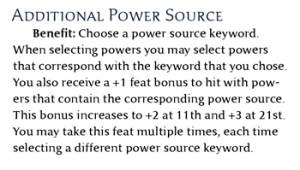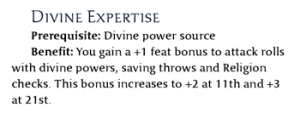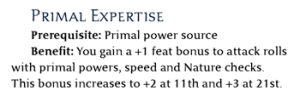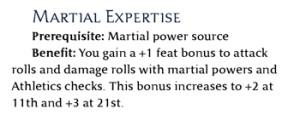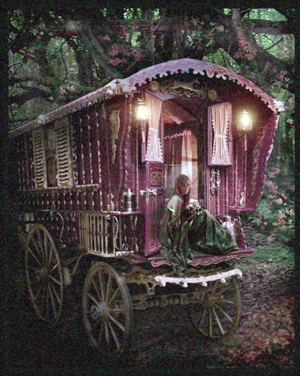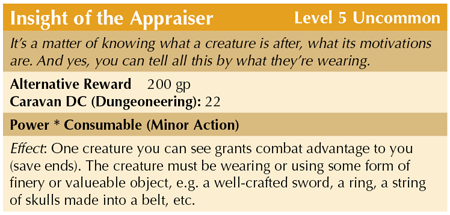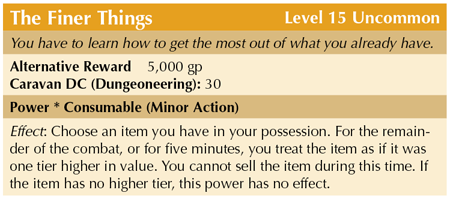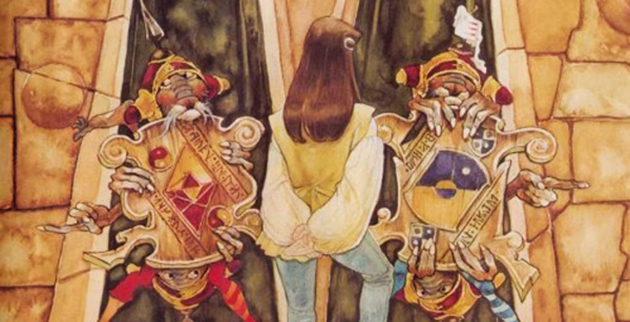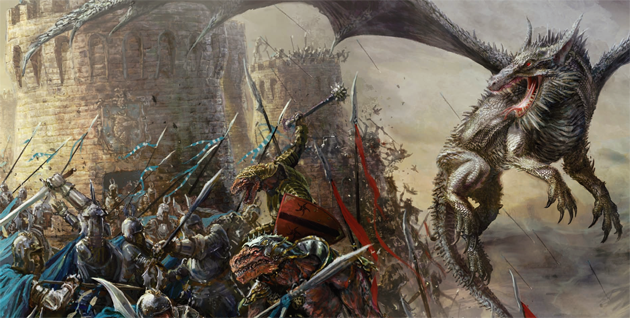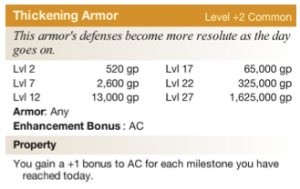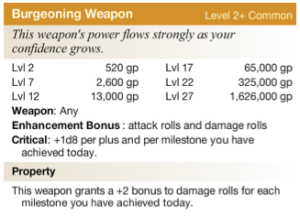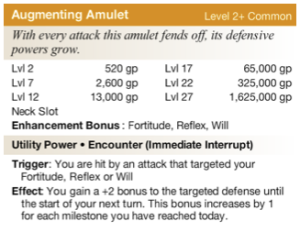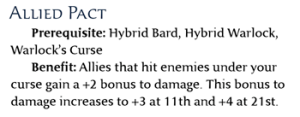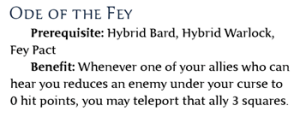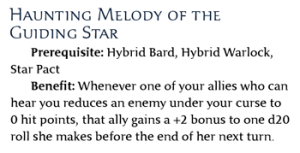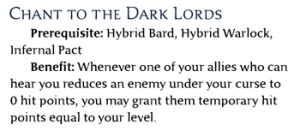Use What’s in the Book
April 26, 2012 3 Comments
I flip through pages and pages of magic items and I see these mechanics that are clunky or useless in the game. I get that everyone plays a different game and an item in yours might be amazing, but in mine worthless; one man’s trash, etc. My problem isn’t the variety, it’s how many items are just reinventing something that’s already a mechanic.
 For instance, I find it pretty amazing that any character can use a Heal check to force an ally to take their second wind. Or they can grant them a save, or just provide them a +2 to their next saving throw. It’s built into the system already, no need for extra powers. Now, the conditions on that ability are kinda harsh: you have to be adjacent, and it’s a standard action. Eesh. Well, why isn’t there something out there to facilitate that? In all honesty, there are some things similar to this, but they all fall rather flatly. Then, of course, there is Healing Word which is twice as good as any Heal check, and clerics get that at 1st level. Not to mention the bevy of powers and feats that help grant saves or force second wind. Uh, but what if you don’t want to be a cleric, or a warlord, or you don’t have the prerequisites for that feat? It seems like with 4e’s versatility of propping up hedge classes, it would be a no brainer to start with something available to all classes and offer options to improve those options over the course of a character’s career. All of this while never quite stepping on the toes of those who are masters at such tactics.
For instance, I find it pretty amazing that any character can use a Heal check to force an ally to take their second wind. Or they can grant them a save, or just provide them a +2 to their next saving throw. It’s built into the system already, no need for extra powers. Now, the conditions on that ability are kinda harsh: you have to be adjacent, and it’s a standard action. Eesh. Well, why isn’t there something out there to facilitate that? In all honesty, there are some things similar to this, but they all fall rather flatly. Then, of course, there is Healing Word which is twice as good as any Heal check, and clerics get that at 1st level. Not to mention the bevy of powers and feats that help grant saves or force second wind. Uh, but what if you don’t want to be a cleric, or a warlord, or you don’t have the prerequisites for that feat? It seems like with 4e’s versatility of propping up hedge classes, it would be a no brainer to start with something available to all classes and offer options to improve those options over the course of a character’s career. All of this while never quite stepping on the toes of those who are masters at such tactics.
For instance, I first envisioned a feat that would allow one to use the First Aid mechanic of Heal as a minor action. Oh wait, there’s one right here I see in the compendium…Combat Medic. Wait, stabilize the dying? That’s it? Okay, I see the +2 to Heal checks, thanks, but what I really want is to just use all faculties of the First Aid action as a minor action—stabilizing the dying happens so rarely. Why is this feat so poorly written (for me)? Can I make something that isn’t broken that serves the purpose I’m after?
The Power is in Your Hand
I actually enjoy how rings are rather inaccessible until low paragon tier. They should be the ultimate powerful items in the game, they always have been. It’s just so darn tempting to build one that is just within reach of heroic tier that doesn’t break the bank on abilities, mostly because each character gets TWO slots for rings—it’s like they MAKE you want to decorate that xmas tree.
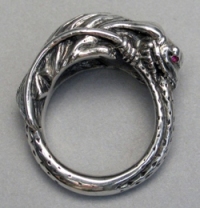 Anyway, I was thinking about the properties of each of the item slots and how the ring really does symbolize power and magic as it rests on the end of our pointers and manipulators and feelers and clenchers. Hands are where the power is, and a ring seems to magnify that. The power is already there, in the book with rules that provide each character to make use of their skills, despite being trained or not. Any character can make a perception check, not just the ones that are trained. Any character can make a thievery check to disarm a trap or steal something from an unwary person. It’s sad to me that players, given this freedom, don’t take more chances on things they don’t have a bazillion skill points in, or that they stack themselves with items that boost their bazillion skill points by 2 more to make them unstoppable in one or two departments, literally being unable to fail a Hard DC of certain skills.
Anyway, I was thinking about the properties of each of the item slots and how the ring really does symbolize power and magic as it rests on the end of our pointers and manipulators and feelers and clenchers. Hands are where the power is, and a ring seems to magnify that. The power is already there, in the book with rules that provide each character to make use of their skills, despite being trained or not. Any character can make a perception check, not just the ones that are trained. Any character can make a thievery check to disarm a trap or steal something from an unwary person. It’s sad to me that players, given this freedom, don’t take more chances on things they don’t have a bazillion skill points in, or that they stack themselves with items that boost their bazillion skill points by 2 more to make them unstoppable in one or two departments, literally being unable to fail a Hard DC of certain skills.
The Right Skills
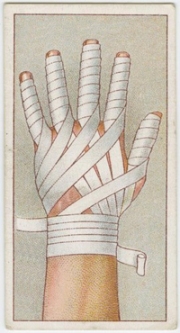 I know I am not wholly innocent in proper skill use; one of my characters has Arcane Mutterings, a 2nd level utility skill power that allows him to use Arcana for any Diplomacy, Intimidate or Bluff skill once per encounter. I find that to be a unique way to twist the game’s mechanics in his favor; I have forced an enemy to surrender several times now using Arcana, and I believe (I hope) it has been for the ease of our party’s adventuring.
I know I am not wholly innocent in proper skill use; one of my characters has Arcane Mutterings, a 2nd level utility skill power that allows him to use Arcana for any Diplomacy, Intimidate or Bluff skill once per encounter. I find that to be a unique way to twist the game’s mechanics in his favor; I have forced an enemy to surrender several times now using Arcana, and I believe (I hope) it has been for the ease of our party’s adventuring.
I’d love to see that adjustment to skill use manifest in other ways. The point here is to empower the PCs to make decisions they normally feel are too risky for an attempt, or that those decisions disarm them from the stuff they really want to do. If you wanted to be a “combat medic,” you’d be using Heal all the time, bouncing from ally to ally keeping them alive. There’s already a cap on how often you can use your Second Wind, and saving throws are dicey enough already, so this mechanic doesn’t seem broken to me.
If you had the power to not necessarily improve your odds, but make the rules that are already in the book a bit more palatable, would you? Adding a +2 to Stealth isn’t doing anything for our most powerful items in the world, it’s making the world a math game, and a math game already has its outcome determined. Try these new items on for size and let me know what you think.

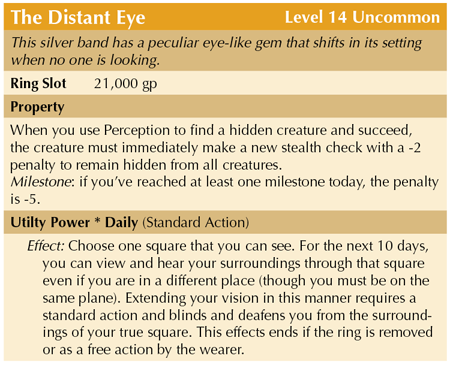

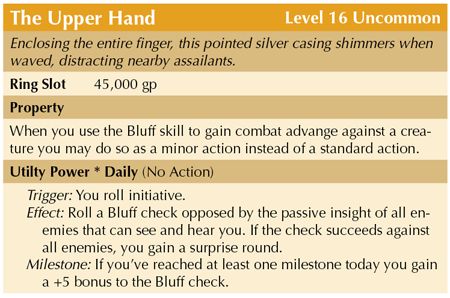
 With Wizards of the Coast pronouncing that they hope to eliminate a lot of the jargon in the next edition, this would be a welcomed streamlining of item crafting that would help make alchemy important and viable again. Some might feel that clumping magic item crafting into alchemy is disingenuous because alchemy is supposed to represent some form of mystical chemistry and less magical enchantment. They say that alchemy shouldn’t allow an effect that alters your form to appear like another creature (Elixir of Chameleon Power) because that is a magical effect, and something not achievable by science. They say that alchemy is rudimentary chemistry and basic science used as an interpretation of magic-like effects, only useful for things like like fire bombs and noxious gases.
With Wizards of the Coast pronouncing that they hope to eliminate a lot of the jargon in the next edition, this would be a welcomed streamlining of item crafting that would help make alchemy important and viable again. Some might feel that clumping magic item crafting into alchemy is disingenuous because alchemy is supposed to represent some form of mystical chemistry and less magical enchantment. They say that alchemy shouldn’t allow an effect that alters your form to appear like another creature (Elixir of Chameleon Power) because that is a magical effect, and something not achievable by science. They say that alchemy is rudimentary chemistry and basic science used as an interpretation of magic-like effects, only useful for things like like fire bombs and noxious gases. I feel like you could certainly paint your own campaign in that light if you’d like, but I’d much prefer we scrap the pretense and remember that D&D is based on the premise of a magical world. How did Dr. Frankenstein raise his creation from the dead? Um, science. How did Peter Parker become the deft web-slinging hero of Spider-Man? Yup, science. I actually prefer to think that alchemy is just a refinement of magical and mundane materials in Dungeons & Dragons; you’re simply adding the right bit of this with the right bit of that, so that when you need it, it does its thing and then its gone. And, oh yeah, it’s relatively uncontrollable and can get you in some serious sticky situations.
I feel like you could certainly paint your own campaign in that light if you’d like, but I’d much prefer we scrap the pretense and remember that D&D is based on the premise of a magical world. How did Dr. Frankenstein raise his creation from the dead? Um, science. How did Peter Parker become the deft web-slinging hero of Spider-Man? Yup, science. I actually prefer to think that alchemy is just a refinement of magical and mundane materials in Dungeons & Dragons; you’re simply adding the right bit of this with the right bit of that, so that when you need it, it does its thing and then its gone. And, oh yeah, it’s relatively uncontrollable and can get you in some serious sticky situations.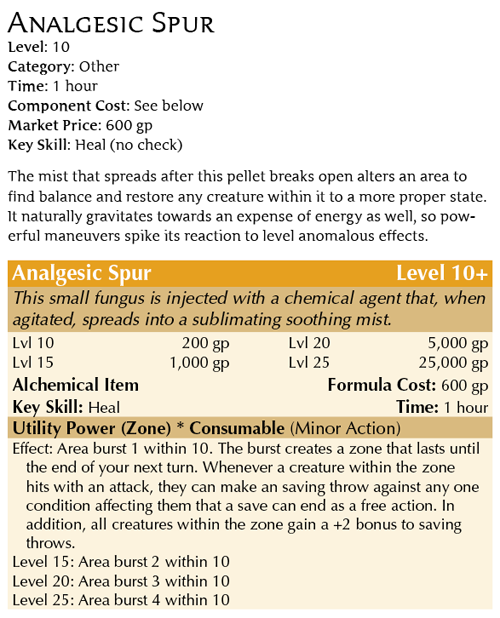
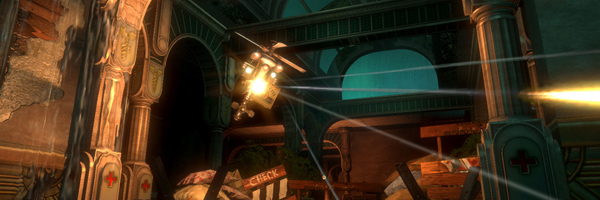
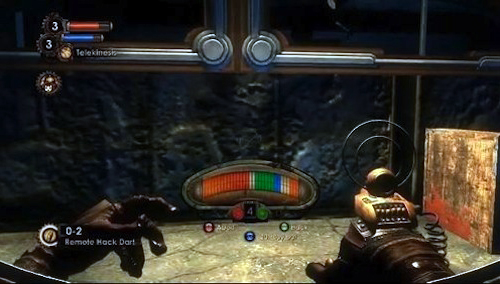

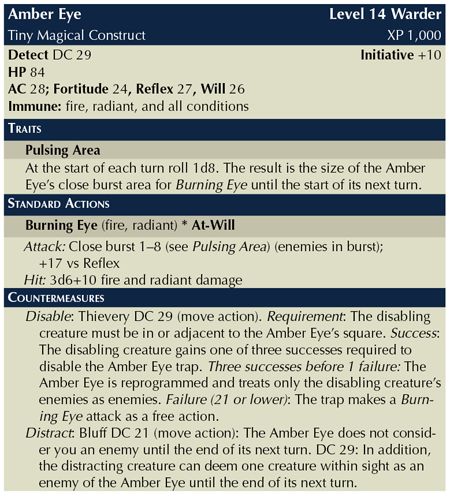

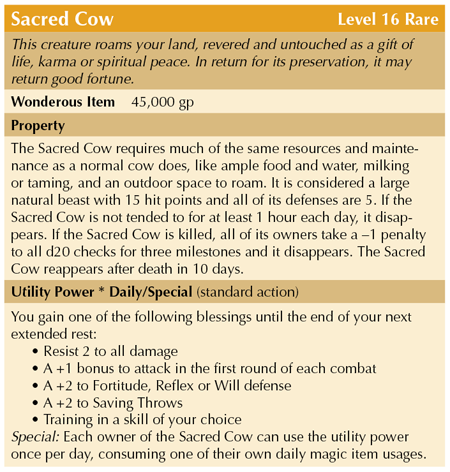
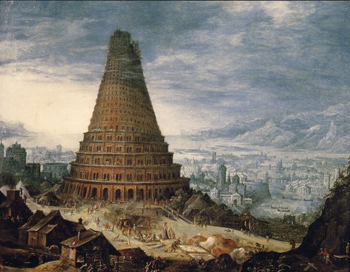 A related reference I would like to point out is a recent article by Mike Shea at Critical-hits.com titled “
A related reference I would like to point out is a recent article by Mike Shea at Critical-hits.com titled “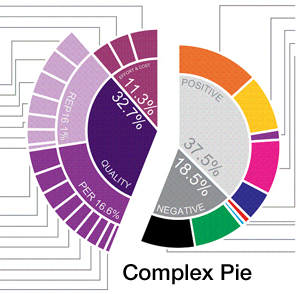 Another reference I would like to point out is Monte Cook’s Legends & Lore column, specifically some of his recent notions on complexity compared to level. As is a general suspicion in the D&D community, Cook seems to be asking big questions about the game in order to gather data for a future reboot of the system. A recent article by him, “A Different Way to Slice the Pie,” suggests that the game could be streamlined by aligning the complexity of rules to the level of an adventure. I am in full favor of this kind of structure as it helps categorize play style while overlapping with player experience. In many senses, this is already an attribute of the game, but the rising complexity is not necessarily exhibited from behind the screen but in the build of a player character; you don’t start a game with a newbie at higher levels because the monsters are harder or the traps are more complicated…you don’t start them at higher levels because there are too many options to consider when drawing up a character. Cook suggests that if the game is going to have a scale of complexity (which it already does through player generation), that complexity should increase across the board so that not only players gain a complicated portfolio of options at higher tiers, but the challenges they face match such sophistication.
Another reference I would like to point out is Monte Cook’s Legends & Lore column, specifically some of his recent notions on complexity compared to level. As is a general suspicion in the D&D community, Cook seems to be asking big questions about the game in order to gather data for a future reboot of the system. A recent article by him, “A Different Way to Slice the Pie,” suggests that the game could be streamlined by aligning the complexity of rules to the level of an adventure. I am in full favor of this kind of structure as it helps categorize play style while overlapping with player experience. In many senses, this is already an attribute of the game, but the rising complexity is not necessarily exhibited from behind the screen but in the build of a player character; you don’t start a game with a newbie at higher levels because the monsters are harder or the traps are more complicated…you don’t start them at higher levels because there are too many options to consider when drawing up a character. Cook suggests that if the game is going to have a scale of complexity (which it already does through player generation), that complexity should increase across the board so that not only players gain a complicated portfolio of options at higher tiers, but the challenges they face match such sophistication. Fight Synergy with Synergy. One of the aspects of upper tier play is that PCs have so many feats and powers and items that at a certain point they realize that they can spare a few to optimize other team members instead of just themselves. This can lead to very very dangerous combinations, but it’s also something they should be rewarded for. However, PCs shouldn’t be the only creatures in the universe that have thought about working as a team. Add aspects to your monsters that make them more effective in ensemble—breaking apart that harmony can be a great goal to a combat encounter. The heroes can’t have their cake and eat it too in every combat.
Fight Synergy with Synergy. One of the aspects of upper tier play is that PCs have so many feats and powers and items that at a certain point they realize that they can spare a few to optimize other team members instead of just themselves. This can lead to very very dangerous combinations, but it’s also something they should be rewarded for. However, PCs shouldn’t be the only creatures in the universe that have thought about working as a team. Add aspects to your monsters that make them more effective in ensemble—breaking apart that harmony can be a great goal to a combat encounter. The heroes can’t have their cake and eat it too in every combat.











